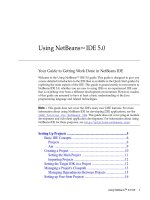5 electrolytes kbm
Bạn đang xem bản rút gọn của tài liệu. Xem và tải ngay bản đầy đủ của tài liệu tại đây (465.64 KB, 77 trang )
CLINICAL CHEMISTRY
ELECTROLYTES
1
Introduction
– This chapter is largely about the water
and electrolytes ( salts )in your plasma and
how the body manages to keep you from
drying up and blowing away even if you are
in the hot Texas sun and without liquid
drink.
2
Chapter KEY TERMS
•
•
•
•
•
•
•
•
•
•
•
•
•
Anion
Anion Gap
Cation
Active transport
Diffusion
Electrolyte
Osmolality
Osmolality
Polydipsia
Tetany
ADH
Hypothalamus Gland
Renin - Angiotensin Aldosterone System
•
•
•
•
Hyper / Hypo … natremia ,
kalemia, calcemia
Parathyroid Hormone ( PTH )
Acidosis / Alkalosis
Calcitonin
Ion Selective Electrode
•
•
•
•
•
•
•
Na
K
Cl
CO2
Ca
Mg
PO4
•
= Sodium
= Potassium
= Chloride
= Carbon Dioxide
= Calcium
= Magnesium
= Phosphate
3
• Define the key terms
General Objectives
• Discuss the factors that regulate each of the electrolytes
• Discuss the physiological functions and clinical significance of
each of the electrolytes
• Discuss ISE and Osmometers
4
Electrolytes
• Electrolytes
– Substances whose molecules dissociate into ions
when they are placed in water.
– CATIONS (+)
ANIONS (-)
• Medically significant / routinely ordered electrolytes
include:
– sodium (Na)
– potassium (K)
– chloride (Cl)
– and CO2 (in its ion form = HCO3- )
5
Electrolyte Functions
•
•
•
•
•
•
•
•
Volume and osmotic regulation
Myocardial rhythm and contractility
Cofactors in enzyme activation
Regulation of ATPase ion pumps
Acid-base balance
Blood coagulation
Neuromuscular excitability
Production of ATP from glucose
6
Electrolytes
• General dietary requirements
– Most need to be consumed only in small
amounts as utilized
– Excessive intake leads to increased excretion
via kidneys
– Excessive loss may result in need for
corrective therapy
• loss due to vomiting / diarrhea; therapy required
- IV replacement, Pedilyte, etc.
7
Electrolytes
• Water (the diluent for all
electrolytes) constitutes 4070% of total body and is
distributed:
– Intracellular – inside cells
• 2/3 of body water
(ICW)
– Extracellular – outside cells
1/3 of body water
– Intravascular – plasma
93% water
» Intrastitial -surrounds the
cells in tissue (ISF)
•
8
Electrolytes
9
Electrolytes
• Ions exist in all of these fluids, but the
concentration varies depending on individual
ion and compartment
• The body uses active and passive transport
principles to keep water and ion concentration
in place
10
Electrolytes
• Sodium has a pulling effect on water
– Na affects extracellular fluids (plasma &
interstitial) equally.
– However, because there is considerably more Na
outside cells than inside, the water is pulled out
of cells into the extracellular fluid.
– Na determines osmotic pressure of extracellular
fluid.
11
Electrolytes
• Proteins (especially albumin) inside the
capillaries strongly pulls/keeps water inside
the vascular system
– Albumin provides oncotic pressure.
– By keeping Na & albumin in their place, the
body is able to regulate its hydration.
• When there is a disturbance in osmolality,
– the body responds by regulating water intake,
– not by changing electrolyte balance
12
Electrolytes
• Laboratory assessment of body
hydration is often by determination
of osmolality and specific gravity of
urine
13
Electrolytes
Osmolality • Physical property of a solution based
on solute concentration
– Water concentration is regulated by
thirst and urine output
– Thirst and urine production are
regulated by plasma osmolality
14
Electrolytes
Osmolality ∀ ↑ osmolality stimulates two responses
that regulate water
– Hypothalamus stimulates the sensation of
thirst
– Posterior pituitary secrets ADH
• ( ADH increases H2O re-absorption by renal
collection ducts )
• In both cases, plasma water increases
15
Electrolytes
• Osmolality
– concentration of solute / kg
– reported as mOsm / kg
• another term:
– Osmolarity - mOsm / L - not often
used
16
Electrolytes
• Determination
– 2 methods or principles to determine
osmolality
• Freezing point depression
– (the preferred method)
• Vapor pressure depression
– Also called ‘dewpoint’
17
Specimen Collection
• Serum
• Urine
• Plasma not recommended due to
osmotically active substances that can be
introduced into sample
• Samples should be free of particulate
matter..no turbid samples, must centrifuge
18
Electrolytes
• Calculated osmolality
– uses glucose, BUN, & Na values
– (Plasma Sodium accounts for 90 % of plasma
osmolality)
• Formula:
– 1.86 (Na) + glucose∕18 + BUN∕2.8 = calculated
osmolality
• Osmolal gap = difference between calculated and
determined osmolatity
– Should be less than 10-15 units difference
• (measured – calculated = 10 to 15)
19
Electrolytes
• Increase in the difference between
measured and calculated
– would indicate presence of osmo active
substances such as possibly alcohol - ethanol,
methanol, or ethylene glycol or other substance.
∀ ↑ Osmolality are concerns for
– Infants
– Unconscious patients
– Elderly
20
Electrolytes
• Decreased osmolality
– Diabetes insipidus
• ADH deficiency
• Because they have little / no water reabsorption, produce 10 – 20 liters of urine
per day
21
Electrolytes
• Osmolality normal values
–
–
–
–
Serum – 275-295 mOsm/Kgm
24 hour urine – 300-900 mOsm/Kgm
urine/serum ratio – 1.0-3.0
Osmolal gap < 10-15 mOsm (depending on
author)
22
Electrolytes
• Classifications of ions -
by their charge
– Cations – have a positive charge - in an
electrical field, (move toward the cathode)
• Na+ = most abundant extracellular cation
• K+ = most abundant intracellular cation
23
Electrolytes
– Anions – have a negative charge - move
toward the anode
• Cl– (1st) most abundant extracellular anion
• HCO–3 – (bicarbonate) second most abundant
extracellular anion
24
Electrolytes
• Phosphate is sometimes discussed as
an electrolyte, sometimes as a
mineral.
– HPO-24
/
H2PO-4
– when body pH is normal, HPO-24 is the
usual form (@ 80 % of time)
25







